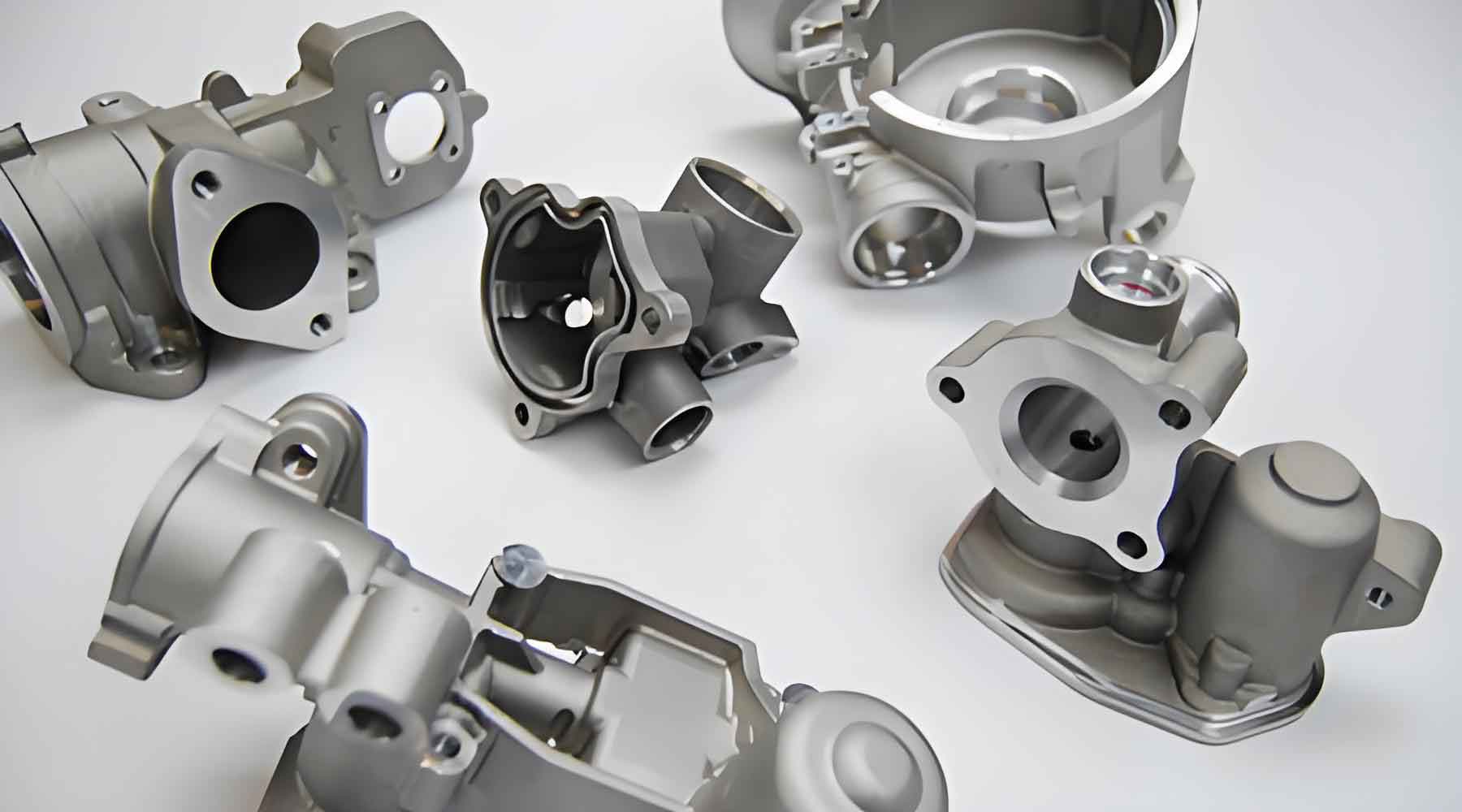This study focuses on optimizing the precision investment casting process for ductile iron protective components used in oil drilling machinery. These components, characterized by their hollow cylindrical geometry with asymmetric slots and threaded grooves, require defect-free surfaces and internal structures to ensure operational reliability. Through numerical simulations and experimental validation, we address critical challenges such as shrinkage porosity and gas entrapment during casting.

1. Component Geometry and Material Properties
The protective component features a cylindrical structure with 8 through-holes and external thread grooves. Key dimensions include:
| Parameter | Value |
|---|---|
| Outer diameter | 148.49 mm |
| Height | 71.1 mm |
| Wall thickness | 20 mm |
The QT600-3 ductile iron material exhibits the following properties:
$$T_{\text{liquidus}} = 1,\!194^\circ \text{C},\ T_{\text{solidus}} = 1,\!129^\circ \text{C}$$
$$\rho = 7,\!300\ \text{kg/m}^3,\ \sigma_b \geq 600\ \text{MPa}$$
2. Precision Investment Casting Process Design
The initial gating system employed a cluster configuration with four components per mold. The filling velocity was calculated using the Kalgin equation:
$$v_{\text{fill}} = \frac{h}{\delta \sqrt{T}} \times 10^{-2}$$
Where:
- $h$ = component height (71.1 mm)
- $\delta$ = wall thickness (20 mm)
- $T$ = pouring temperature (1,300°C)
This yielded an initial filling velocity of 0.458 m/s. Process parameters included:
| Parameter | Value |
|---|---|
| Shell thickness | 6 mm (6 layers) |
| Shell preheat | 900°C |
| Cooling method | Natural convection |
3. Numerical Simulation and Defect Analysis
ProCAST simulations revealed critical solidification patterns:
| Time (s) | Solid Fraction (%) |
|---|---|
| 944 | 10-20 |
| 1,774 | 80-90 |
| 2,704 | 100 |
The original gating system produced unacceptable shrinkage porosity (13.26%), primarily at gate-component junctions due to premature solidification blocking feeding paths.
4. Process Optimization Strategies
Modified gating systems were evaluated:
| Design | Shrinkage Rate (%) |
|---|---|
| Original | 13.26 |
| Side-gated (a) | 6.90 |
| Radial-gated (b) | 1.37 |
Orthogonal testing optimized critical parameters:
| Factor | Level 1 | Level 2 | Level 3 |
|---|---|---|---|
| A: Pouring temp. (°C) | 1,250 | 1,280 | 1,300 |
| B: Fill speed (m/s) | 0.450 | 0.455 | 0.460 |
| C: Shell preheat (°C) | 800 | 900 | 1,000 |
The optimal combination (A3B3C1) demonstrated:
$$\text{Shrinkage}_{\text{min}} = 1.321\%\ \text{at}\ 1,\!300^\circ \text{C},\ 0.460\ \text{m/s},\ 800^\circ \text{C}$$
5. Thermal Dynamics in Precision Investment Casting
The heat transfer coefficient matrix significantly impacts solidification:
| Interface | h (W/m²K) |
|---|---|
| Shell-component | 1,000 |
| Component-air | 1,000 |
| Shell-air | 50 |
The thermal gradient during solidification follows:
$$\nabla T = \frac{q”}{k} = \frac{h(T_{\text{melt}} – T_{\text{shell}})}{k}$$
Where $q”$ is heat flux and $k$ is thermal conductivity of the ceramic shell.
6. Production Validation
Implementing the optimized precision investment casting parameters reduced defect rates by 89.6% compared to initial conditions. Actual castings showed complete elimination of macro-shrinkage in critical sections, with microporosity levels within acceptable limits (ASTM E505 Level 2).
7. Conclusion
This study demonstrates that precision investment casting of ductile iron components requires:
- Radial feeding systems to maintain thermal gradients
- Controlled shell preheating below 800°C
- High-velocity filling (0.46 m/s) with superheating to 1,300°C
The methodology establishes a framework for optimizing complex precision investment casting processes through integrated simulation and statistical experimental design.
